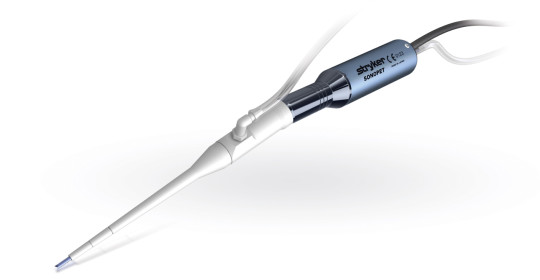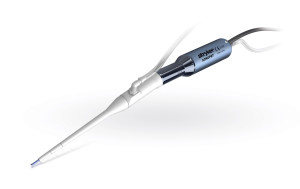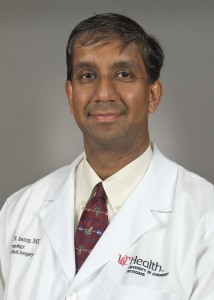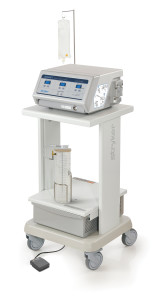
Technical Innovation in Skull Base Surgery Program
Skull base surgeries are some of the most delicate procedures surgeons can perform, so every advantage is welcomed. “As skull base surgeons, we always have to adapt in order to push the frontier of medicine forward,” says Ravi N. Samy, MD, Director of the Neurotology Fellowship and Associate Professor of Otolaryngology, University of Cincinnati Medical Center. One cutting-edge technology that Samy uses often and has provided an edge in recent years is the ultrasonic bone aspirator, which utilizes both longitudinal and torsional motion to give surgeons precise control and allowing fine bone dissection in close proximity to delicate structures.

The Sonopet Ultrasonic Aspirator is a versatile system for precise control of soft tissue while simultaneously allowing fine bone dissection in close proximity to delicate structures. The console (shown left) is capable of running the handpiece(s) (shown above) at multiple frequencies through a single connection port. Images courtesy of Stryker.
The ultrasonic bone aspirator now in use by UC Medical Center, known as Sonopet and manufactured by Stryker, allows users to independently control power, suction, and irrigation with one handpiece, and decreases the risk of damaging the facial nerve, according to Samy. Less bone dust may also be created during procedures. One advantage of this greater degree of control can be seen in retrosigmoid vestibular schwannoma removal surgery, where reduced bone dust dispersion could possibly decrease the frequency of postoperative headache.1
Utilization of the ultrasonic bone aspiration has also been adapted for middle cranial fossa surgery at UC Medical Center. One example where surgeons use this challenging technique is in acoustic neuromas, where preserving hearing function is especially difficult. The ultrasonic bone aspirator may allow for less hearing loss and better outcomes for patients.
“Along with innovation, education is critical,” says Samy. “Our surgical volume is high enough here that we are one of only 15 programs nationwide that offers a neurotology fellowship, reflecting our commitment to preparing the next generation of surgeons to be comfortable with delicate skull base surgical procedures and utilizing revolutionary technology.” The most important measure of success, however, as Samy is quick to note, is in improved patient outcomes.
Reference: 1. Weber JD, Samy RN, Nahata A, Zuccarello M, Pensak ML and Golub JS. Reduction of bone dust with ultrasonic bone aspiration: implications for retrosigmoid vestibular schwannoma removal. Otolaryngol Head Neck Surg. 2015 Jun;152(6):1102-7.

Ravi N. Samy, MD, FACS
Neurotologist, UC Neuroscience Institute
Program Director of the Neurotology Fellowship
Associate Professor of Otolaryngology
Phone: (513) 558-4143
Email: Ravi.Samy@uc.edu
Connect with Ravi Samy, MD on Doximity


